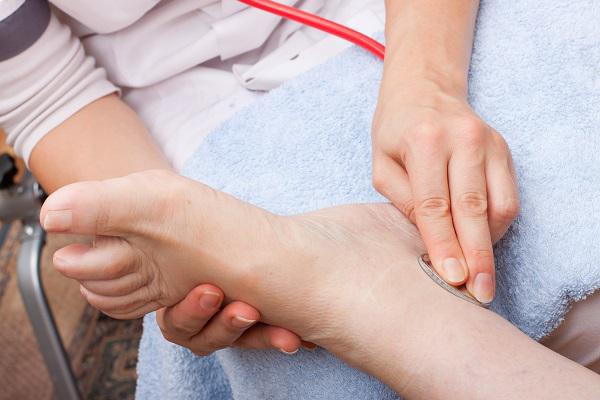How Foot Orthotics Work?

Foot orthotics are not the basic shoe inserts that you can buy from any medical store without a prescription. Rather, orthotics are medical devices prescribed by the doctor to fix your heel or foot pain. People often confuse orthotics with inserts because both are worn inside the shoes. If you are reading this, chances are your doctor or physiotherapist has recommended orthotics and you want to know more about it before making a decision. Orthotics help relieve conditions that cause pain or discomfort in the foot. With the right device, you can avoid surgery and fix the problem.
When Do You Need Foot Orthotics?
A physiotherapist or podiatrist can let you know if you need orthotics to find relief. The main symptoms are pain and discomfort in the heel, feet and legs. You may need a suitable pair of orthotics to prevent foot pain associated with conditions such as diabetes.
You should consult with a professional if you struggle to move your feet like you are supposed to do. Orthotics are highly effective in correcting deformities in the foot. It provides great support to the ankle and cushions your feet against further injuries.
How Does a Physiotherapist Prescribe Orthotics?
Every orthotic is unique. Even people complaining about similar kinds of heel pain will not receive the same orthotic. It is specially custom-made for each patient.
Now the question is how the physiotherapist helps in the process.
The physical therapist first gathers information about your pain. They ask questions related to your symptoms to know what makes them worse or even better.
Next, they perform physical tests to detect the exact source of the pain. This stage is where they identify if any deformity or injury is causing the pain and where. You may have to perform certain activities or get an X-ray as well.
Once they know the source, they prepare the treatment plan in which orthotics remain an integral option. They prescribe custom orthotics based on the above-mentioned stages.
What are the Benefits of Custom Orthotics?
Yes, custom orthotics fix foot, heel, leg and ankle problems. Physiotherapists often recommend these in addition to physical therapy exercises. However, they may also prescribe the same if your feet extra cushioning and support. With the right orthotic, it is possible to prevent surgeries.
What are the Different Types of Orthotics?
Orthotics are made up of different types of materials. The therapist or doctor prescribes the material depending on the intensity of symptoms and conditions. The most common materials are plastic or carbon fiber since these make the devices highly flexible.
Some orthotics may have full-shoe inserts attached to provide extra support to the foot. In some cases, patients may also have to wear braces or kinesiology taping along with the orthotics.
Are Orthotics Safe?
Yes, orthotics are safe to wear and are highly effective as well. But, it isn’t suitable for all types of foot problems. This is where the role of a physiotherapist or doctor comes into play. They can assess your condition and let you know if orthotics can help you.
Blog Categories
- Acupuncture Treatment (10)
- Ankle Sprain (1)
- Arthritis Treatment (1)
- Back Pain (23)
- Chiropractic Care (38)
- Tennis Elbow (1)
- Chronic Pain (5)
- COVID-19 (1)
- Custom Orthotics (6)
- Dizziness (4)
- Exercises (12)
- Foot Orthotics (6)
- Hamstring Stretches (2)
- Info Articles (3)
- Kids Injury (1)
- Laser Therapy (4)
- Massage Therapy (21)
- Neck Pain (16)
- Orthopedic (1)
- Osteoarthritis (5)
- Osteopathy (3)
- Pain Management (17)
- Physiotherapy Benefits (44)
- Physiotherapy Clinic (6)
- Physiotherapy Exercises (12)
- Physiotherapy Tips (25)
- Physiotherapy Treatment (100)
- Rotator Cuff (2)
- Shin Splints (1)
- Shoulder (2)
- Spine (4)
- Sports Physiotherapy (1)
- Uncategorized (1)
- Vestibular Physiotherapy (2)
- Work From Home (2)


